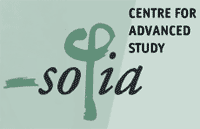THE REAL CITY IN AN IMAGINARY TERRITORY (THE CASE OF PLOVDIV)
THE REAL CITY IN AN IMAGINARY TERRITORY (THE CASE OF PLOVDIV)
Author(s): Aleksander KiossevSubject(s): Social Sciences
Published by: Centre for Advanced Study Sofia (CAS)
Summary/Abstract: In the eighteenth and the beginning of the nineteenth century, Plovdiv was a complex multicultural space – a sort of ‘Balkans in miniature’. There lived Orthodox and Catholic Christians, Muslims; Bulgarians, Turks, Greeks, Jews, Armenians, Pavlikyans (Bulgarian Catholics), Roma and even merchants from Ragusa (i.e. Dubrovnik).1 But the Ottoman city was multicultural in a medieval, not a modern sense. It was far from the ideal of modern multiculturalism – far from being a melting pot, a hybrid place for contacts, conflicts, and re-negotiations of boundaries. The fact that communities met face-to-face did not mean they were in a state of democratic cohabitation, with their cultural identities equally represented in public space, public conflicts or creative dialogues. Before the 1820s, every ethnic-cultural and religious community had its own isolated, localized and strictly defined mode of living, and the contacts between these communities, limited to the practical needs of economic exchange, seem to have been well-regulated and hierarchically structured, also in spatial terms2. These communities inhabited different neighborhoods, some of them quite closed and endogamous (the Pavlikyans (Bulgarian Catholics), Jews and Armenians). They had distinct secular and religious cultures, dress, emblematic everyday food; they practiced their religions in separate temples, celebrated their own holidays and performed their religious rituals in different holy languages (Turkish, Greek, Ladino, even Italian). Thus, in the early 19th century the city lived in pre-modern coexistence of small religious and cultural communities that perpetuated their own distinct modes of living. The most typical token of this enclosure were the communities’ taboos regarding specific eating, drinking or sexual practices of the other communities, stigmatised as repulsive and unclean.[..]
Journal: CAS Sofia Working Paper Series
- Issue Year: 2007
- Issue No: 1
- Page Range: 1-24
- Page Count: 24
- Language: English

